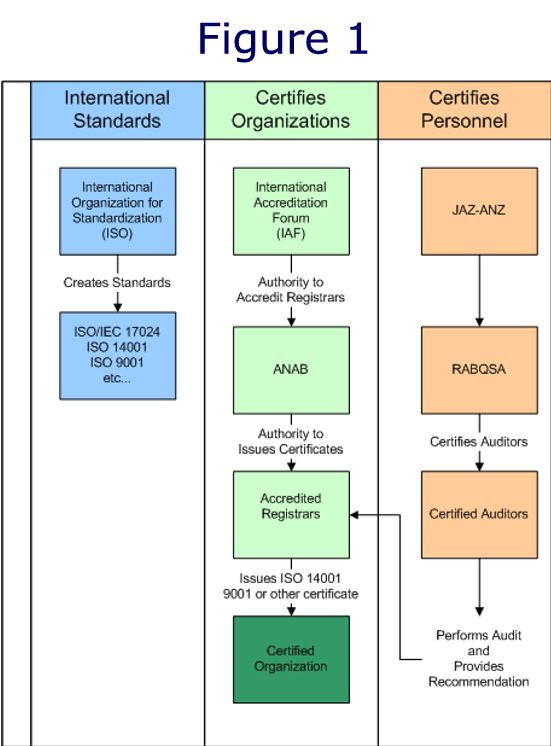One of the registrars we audit for has asked us to respond to a few questions posed by a potential audit client. Each question (in bold font) is followed by our response (in italic font). Feel free to share your thoughts here in a comment.
(1) Which one or two areas of the Quality Manual (of the 8 required areas) does your registrar focus heavily on during the initial certification audit and why?
We view the Quality Manual as a road map to the QMS. It describes the core elements of the QMS and provides direction to related documentation. We use this Manual to help us understand how the QMS operates. The Manual is the point of departure while we go about the work of collecting objective evidence to show that the organization is meeting the requirements of ISO 9001:2008. Therefore, the Manual itself is not the focus of our process approach to auditing. Rather, we use it to point us to the evidence of conformance that we need to observe and record during the audit. We do not treat any areas of the Manual as priority. We use the Quality Manual more for navigation of the QMS to help us find the evidence we need to determine the QMS effectiveness at enabling continual improvement.
(2) Which one or two processes of the required six does your registrar focus heavily on during the initial certification audit and why?
All of the QMS processes are important; thus, during our assessment of an organization’s QMS, we focus on all processes, not just a few. If any of the elements of the QMS are absent (unless design is legitimately excluded,) the system will not be effective. It is therefore imperative to view the QMS as a whole when drawing a conclusion about both its effectiveness and its conformance to ISO 9001:2008.
More mature and ready organizations initially focus their attention on the following areas when implementing and registering a QMS:
8.2.3 Monitoring and Measurement of Processes
Organizations should identify the key performance indicators that they use as metrics of the performance of the organization’s QMS. We like to explore these metrics to understand why the organization chose them, how the measurements are made, and how the results of the measurements are conveyed to management.
8.5 Improvement
The ability of an organization to solve problems is another area we like to explore. What are the processes used to solve problems? How does the organization investigate problems so they understand causality? Although organizations are not required to do so by ISO 9001:2008, we like to investigate to what degree they have embraced formal problem-solving techniques like 5Y, 8D, Lean Six Sigma, or others.
An organization’s ability to solve problems is key to continual improvement. However, during an initial audit, it is sometimes difficult to find much direct evidence of the effectiveness of these techniques. Evidence of the effectiveness of the organization’s problem-solving techniques becomes clearer with time, as the organization works through correcting nonconformances or customer-related issues.
